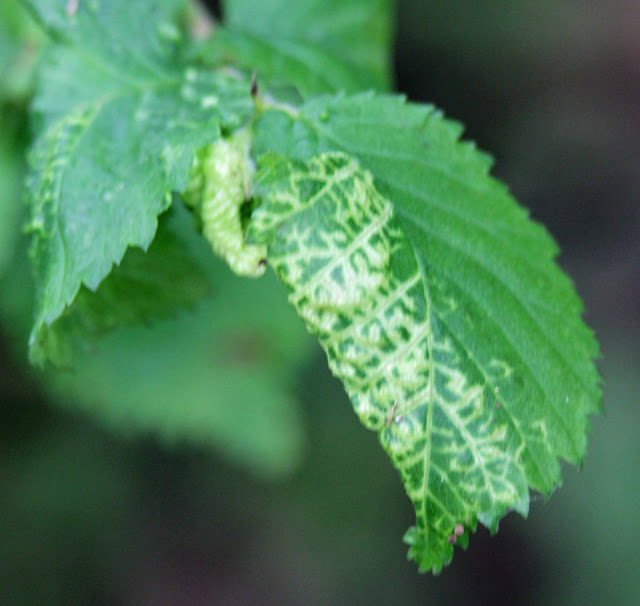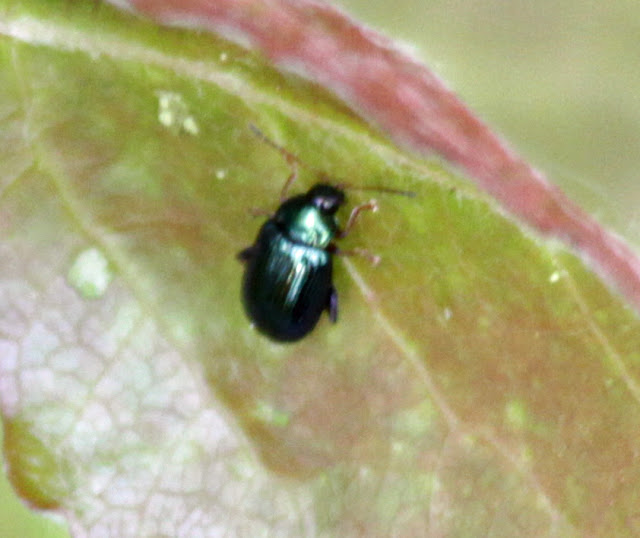I went up to Dene Park at about 3 p.m. after an early morning Nightingale survey, three hours teaching in the morning and some admin in College after lunch.
The nettles and brambles by the side of the first ride slowed me down as they were well stocked with insects and spiders. There must have been aphids present I would imagine, as there were both 7-spot and 14-spot ladybirds in good numbers.
This is one variant of the 14-spot ladybird, Propylea quattuordecimpunctata, a little bit variable in detail. This is a generalist aphid feeder, common all across the UK. It can secrete toxic compounds to deter predators, and is quite a bit smaller than the common red and black 7-spot. Tends to hibernate low down in vegetation.
This other is I think the same species, but is a less usual colour variant. However the mid-line suture is still black in colour:
And this is the very common 7-spot ladybird, Coccinella septempunctata, also a generalist aphid feeder, found across the paleartic. It can also secrete toxic alkaloids to deter predators. It hibernates low down in herbage or in conifer foliage. There is a tiny fly here as well!
There were also quite a lot of nursery web spiders, Pisaura mirabilis, sitting on the tops of the nettle plants, ready to hunt or grab anything that goes past I imagine. I think this is a very common spider, of paleartic distribution, its identity indicated by the overall shape, abdominal colour pattern (variable in detail) and central fringe line over the cephalothorax. Here are three different colour forms, all fairly close together, all very different in colour:
Mixed in with the nursery web spiders, there were these animals, which are harvestmen, the order Opiliones, according to Ophrys on ispot. I should have thought more carefully before I put this picture up!
Perhaps taking dead food material from the spiders and/or harvestmen, there were plenty of scorpion flies around. This one is likely to be
and a bit further on I found this smaller spider:
I also saw the nymph of a bush-cricket, probably the Dark Bush-cricket, Pholidoptera griseoaptera, thanks to Michael Skelton on ispot.
and then, to my intense delight, I was sure I saw a wonderful hoverfly, Leucozona lucorum, beautifully coloured and furry, with dark wing markings, that I have hoped to see for a while. Sadly I only managed a quick "partial" photograph before it flew off into the gloom of the woods away from the path.
There were quite a few hairy shieldbugs, or sloe bugs, Dolycoris baccarum, on the vegetation triangle in the middle of the path. I didn't notice any sloe bushes close by.
and then a very interesting looking sawfly, which I originally thought was a wasp, with a creamy white clypeus and shoulder flashes, black coxae, apical parts of rear legs and overall bodies, orangey tegulae and otherwise orangey legs. Perhaps Tenthredo atra, or another species.
I also disentangled a tortrix caterpillar from some webbed hornbeam leaves. This could be one of a number of tortrix species that attack hornbeams.
Finally there was this tiny Andrena(or something else?) bee on a dandelion flower,
This next one, seen a little bit earlier, was much bigger:





































































